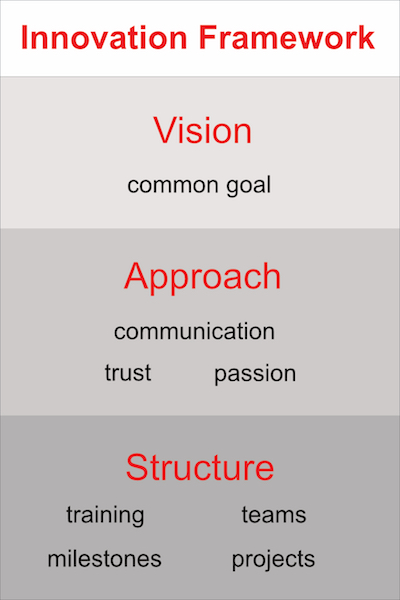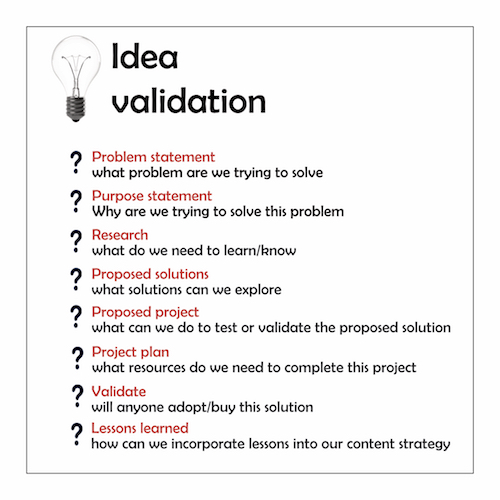As we approach 2021, I’m looking forward to thoughtful articles predicting breakout trends and market opportunities for emerging technologies. I fully expect to see AI, ML, AR, VR, IoT, IIoT, and a few other acronyms displayed across my virtual reading devices, predicting the future of technology with varying degrees of success.
Despite the hype, it’s fair to say we’re not all walking around wearing HUDs, and few products have yet achieved the ubiquity of the Apple iPhone. Yet, there’s no denying the mass adoption of smart home speakers, voice and chatbots for enterprise, and other IoT devices in our homes, cars, and businesses.
The future is clearly here, and from a technical communication perspective, this point is key – the way people interact with content has changed and continues to evolve. For technical writers, it’s not about AR and bots, or some futuristic technology we have not yet imagined. It’s about information and how we develop audience-focused content, regardless of the medium.
The purpose of this article is not to predict emerging technologies, but rather to lay out a framework that we are using at Technically Write IT (TWi) to upskill technical writing teams and develop a culture of innovation. This article presents lessons learned (and those we’re still learning) as we adopt and adapt to emerging technologies, focused on the evolving content requirements of users and the industries we serve.
“Content is King” but the processes aren’t
In 1996, Bill Gates wrote in his essay Content is King: “…the definition of ‘content’ becomes very wide”. Gates was referring to the transition from print to Internet content, even including code as content. The statement has also proven true regarding technical content, and the PC and modem Gates referenced as mediums have expanded to include more digital devices. The value of content is undisputed, but our processes for developing technical content are changing.
Today, users have access to multiple devices and often synchronize digital information across devices. Users less frequently require long-form, linear content, instead expecting information at their fingertips, contextual to the device they’re using, and profiled. User profiles allow information consumption to be more personalized based on preferences, location, and behavioral characteristics.
Advances in voice interfaces have also changed the way users interact with content. The definition of content has certainly become very wide.
These expectations demand an evolution of technical writing processes and represent a significant leap in how content is designed. Traditional content models do not account for highly contextual, multi-dimensional information development and delivery. Furthermore, technical writers are increasingly required to understand rapidly developing new technologies in order to produce content for an ever-changing landscape of devices, formats, and consumption patterns.
Content is still king, but technical writing processes must adapt.
Innovate strategically
In 2017, when research firm Gartner was making grand predictions about AI adoption, and Forrester explained how businesses would delegate customer service to AI-powered chatbots, TWi started exploring the impact such changes might have on a technical writing services company. In 2017, the reality was that most companies in serviced verticals still required traditional content, but TWi wanted to be prepared.
One of the groups that recognized the need for new content models in response to the Industry 4.0 movement was the Information 4.0 Consortium, a European-based non-profit that developed content requirements for what it termed an Information 4.0 era. TWi began researching and experimenting with the concepts put forth by the Information 4.0 Consortium, iiRDS Consortium content delivery standards, and looking at tool interoperability, a challenge with current authoring and delivery processes that only becomes more complex with emerging technologies that often do not account for content inclusion.
With no external funding or client demands for “futuristic” content, TWi initially decided on an internal approach that focused on research, exploration, and experimentation. The leadership “funded” internal teams with time.
Preparing technical writing teams for the content challenges of emerging technologies requires new skills, thought leadership, and a significant financial investment in tools and team resources that may not offer an immediate return on investment. It requires a culture of innovation at all levels of the company.
Establish a framework to support innovation
The leadership at TWi recognized the value of a structured approach that would encourage innovation while noting the boundaries of limited resources and creating alignment with the company’s strategy and objectives.
The company adopted a framework to facilitate exploration, experimentation, and development of content strategies for emerging technologies. The framework included alignment around the vision, an inclusive approach that encouraged everyone to get involved, and some structure around how to carry out activities. Figure 1 shows our Innovation Framework.
Communication, collaboration, and effective processes to manage change and innovation are important elements of the framework. Most importantly, future-proofing a technical writing team requires a clear vision.

Figure 1: Innovation Framework
Focus teams around a vision
If you don’t know what the problem is, how can you solve it? A lack of vision and a clear problem statement present one of the greatest risks for any new project. A well-defined strategy with clear objectives will ensure that all activities are aligned with the company vision. It will help keep your team focused on the end goal and ensure that everyone is on the same page.
Without a clear vision, teams will tend to focus on the question “What are we going to do?” The real question should be “Why are we doing this?” Strategic goals may be very high-level. But specific objectives define how the company will reach those higher-level goals, and these objectives must be research-based and identify pain points in the market.
In that sense, the vision requires consideration of both company needs and industry needs. The company needs will tend to be centered around financial goals: either extending financial boundaries or taking corrective actions to achieve resilience. For example, the company may want to expand services to leverage a more sustainable position.
But industry needs should be a key driver in the “how” and “why” and should inform objectives. What can we do as a company to resolve our clients’ (and potential clients’) issues? Answering those questions clearly will illuminate the “how” and “why”, which should then drive all activities within the company, including those of technical writing teams. A technical writing team must look beyond individual projects and understand the “why” behind a larger vision, which will drive the “how” of innovation.
Let’s look at a practical example of how idea generation and validation may work. A company has set strategic goals to achieve ten percent growth over five years. One key objective may be to develop services to help achieve growth. The technical writing team knows that clients use their services because they have large amounts of legacy content to manage. After conducting client surveys and analyzing data from previous client requests, the technical writing team understands that a high percentage of clients report they have content silos with legacy content that is not machine-readable. To manage the content requires many resources to perform manual, repetitive processes.

Figure 2: Idea validation
There are several opportunities for content innovation in the previous example. The technical writing team may develop more efficient processes, or explore automation or Artificial Intelligence applications to manage content. Those are ideas, but the “why” is clear: Solving any one of those problems has a positive impact on the client and places the company in a better position to offer a new service and meet strategic goals. For a more detailed explanation of idea validation, take a look at Figure 2.
The company vision does not outline the innovative process or the specific innovation goal, but the vision clearly defines the strategic outcome. It’s important to note that specific outcomes may not be clear initially. While that may sound intrepid to some, there must be enough space to permit free thinking, research, and changes in direction to occur as findings dictate dead ends or new areas of exploration. Outcomes may not be clear until the research phase is complete.
It’s up to the leadership and strategists to set a clear vision for the company and communicate this vision to all members of the team. Innovative technical writing teams can be successful with the “how” and “what” once they understand the “why”.
Adopt an inclusive approach
Moving from a traditional service-based company to a focus on information models that fit the new landscape of emerging technology demands a mind shift and complete transformation of internal processes. Future-proofing a technical writing team involves change management.
Change management has become a frightening term in companies seeking to transform and is often approached with a top-down implementation. A more effective approach, and the one TWi adopted, is inclusive. To transform from within requires every member of the team to become committed to innovation. It requires communication, trust, and a good measure of excitement.
Communicate clearly
Communication must start with the leadership team. As stated previously, the company vision must be communicated clearly. Transparent conversations about goals, objectives, and expectations should happen regularly. Communication should go both ways. Leadership and technical writing teams should have ample opportunity to ask questions and question everything. The goal of open communication is to align the thinking of every team member to allow the sharing of ideas and to coordinate all activities toward the common goal.
Trust your team
Transformation and innovation also require that the leadership places a great deal of trust in writing teams. Sometimes ideas reach dead ends. Recognizing that not all ideas may lead to a return is the approach TWi takes toward innovation. All ideas are good – but not all ideas can be aligned with the company strategy, not all ideas are feasible, and not all ideas will result in a desired outcome. But unless we take a close look at those ideas, evaluate them, and even test them, we will never know if those ideas are relevant. TWi takes the approach that ideas are worth considering. Some ideas will lead to a dead end. Others may take the company in a new direction. Some ideas may be nuggets of gold.
Following ideas through at least an initial research phase (if only an initial evaluation), and possibly through a project and testing phase, requires trust. Trust is established through open communication, and risk is minimized when structures are in place to guide teams and align ideas and activities with the company vision.
Nurture passion
It’s important to address the element of excitement. Ideas and innovation are born from passion. Without passionate people, innovation won’t happen. Early on, TWi recognized that providing internal time to work on interesting and exciting projects would nurture passion.
Use structure to guide teams
A clear structure supports team members through the innovation journey. While innovation requires freedom to generate and explore ideas, experiment with tools and processes, and even face dead ends, structure will guide innovative teams toward a common goal and make the most effective use of resources.
In this section, I provide some examples of structures TWi put in place to permit innovative thinking.
Training
To take a deep dive into emerging technologies, even from the perspective of content, requires some level of training and upskilling team members. Depending on the skills of your team, a rigorous training program may be required initially. You may bring in a consultant, as TWi did, to train teams to adapt content practices to emerging tech. An initial, intensive training may focus on high-level concepts that immerse the team in new ways of looking at information and the technologies impacting it. Conferences focused on emerging tech provide an effective way to immerse a team in a subject.
Continuous training can be provided as needs arise and new technologies emerge. For example, if your team has identified a need to develop content for Augmented Reality (AR) experiences, provide access to courses online or offline, and buy an AR headset for the team to play with.
Teams
Internal teams form the backbone of innovation activities at TWi. A team-based structure permits a small group to focus on an area of knowledge, research, or projects. Team formation may be based on expertise or areas of interest.
Focus teams, as the name implies, focus on innovation in a specific topic. Teams may explore innovations in information design, project management, visual graphics, and others. For example, a visual graphics team may research the requirements for 3D CAD drawings used in an Augmented Reality experience.
Milestones
Innovation tends to happen in the context of smaller activities, starts and stops, but there should be some overarching milestones.
Initial milestones should be high-level. There’s a careful balance to consider. Milestones that are too specific can stifle innovation. If they’re too broad, you end up with chaos and may never reach a goal.
Projects and activities
Innovative activities can range from research to experimenting with tools or even coming up with a more innovative process. Activities may be organized into projects with phases, project plans, and shorter-term milestones. Specific teams can work on projects related to their area of focus, or project teams can be multi-disciplinary.
Balance growth and sustainability
There is an element of managing innovation that seeks a balance between growth and sustainability. It’s not a simple thing to manage growth and the resources required while maintaining profitability.
Innovative teams need time, and that’s time not spent on client work. They may need software licenses that are not used in daily client work and may only need them for brief periods of time to experiment. If you’re looking at emerging technologies, they may need some hardware for testing.
Companies need to achieve net gross and profit margins while scaling up as growth occurs. Innovation leadership means making sure all resources are available, but also balancing those resources with existing client needs.
In summary
To future-proof your technical writing team, provide specific training around emerging technologies, establish a supportive culture of innovation, and create a structure for innovative thinking and activities that maintains a balance between growth and sustainability. Create a communication plan based on trust that ensures everyone is moving in the same direction.
Finally, ensure that all team members clearly understand the company vision and are moving toward a common goal. Provide just enough oversight to maintain all innovative activities within the confines of that goal, while making space for new ideas and the resources to research, test, validate, and develop those ideas. This approach will build resilience into the entire company and future-proof your tech writing team.

